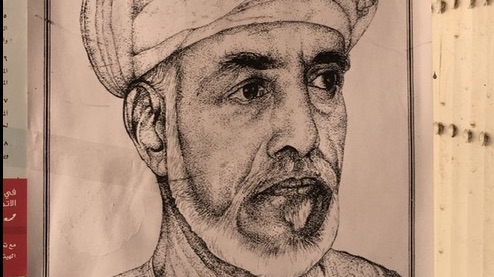(Continued from the previous text)
I looked out from the battlements of the castle like a soldier from years ago.
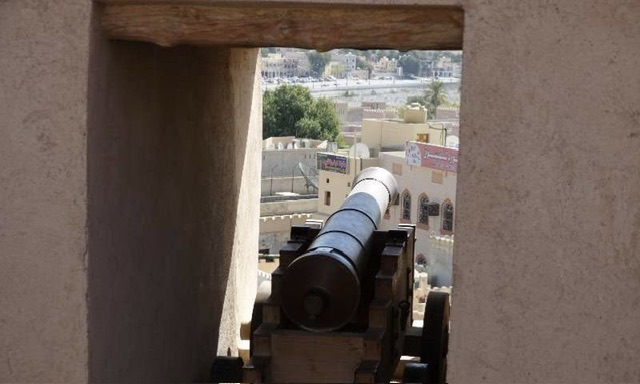
The sign for the men's restroom with an Arab style.
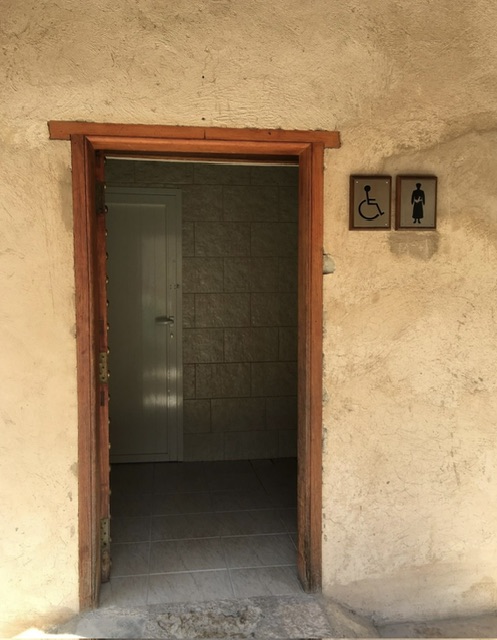
The ruins outside the castle, traces of historical sediment.
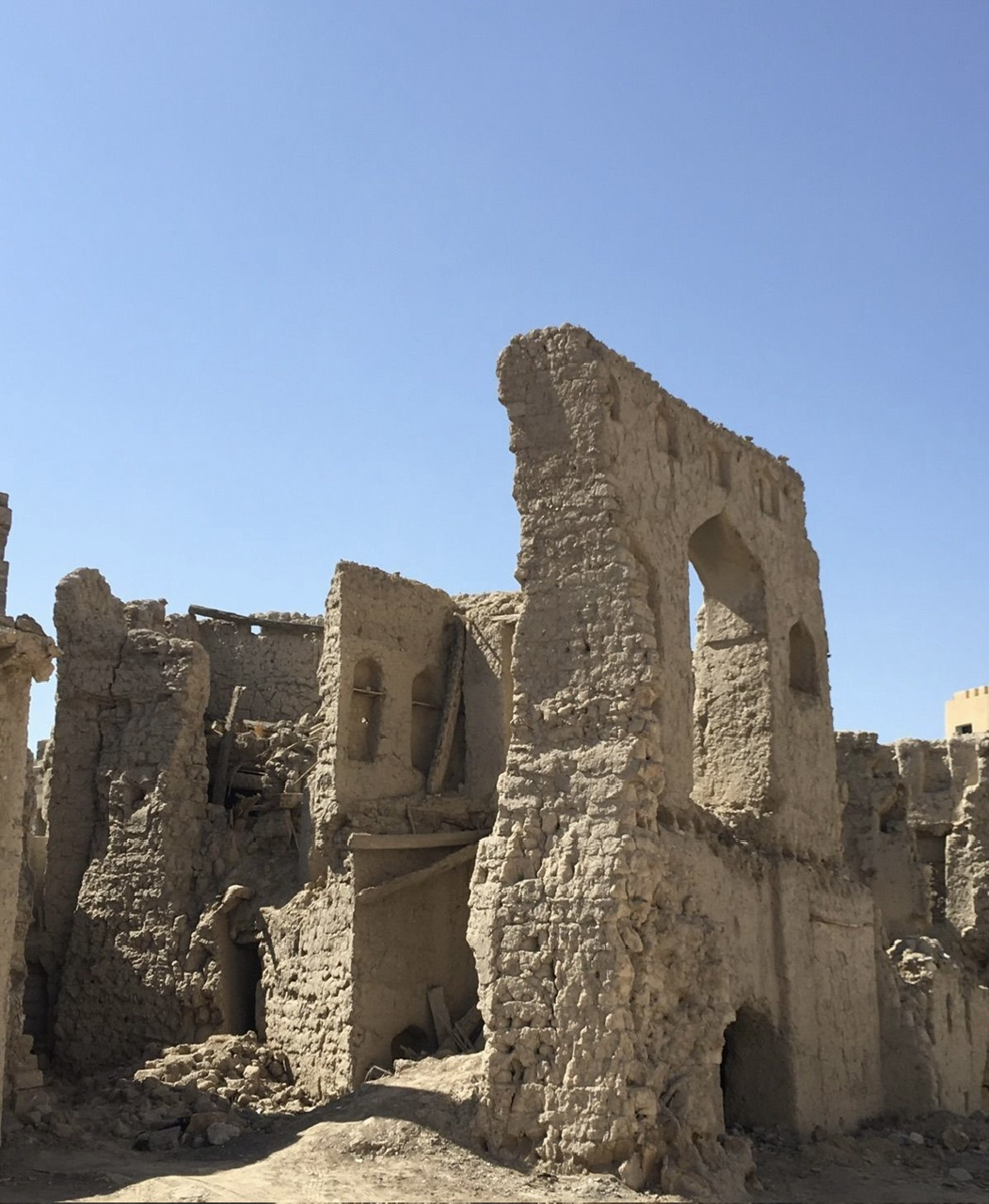
Strolling in the market after leaving the castle.
Omani dagger
Vegetable market
I wandered around the market and captured some portrait photos. Here, friends greet each other with a handshake.
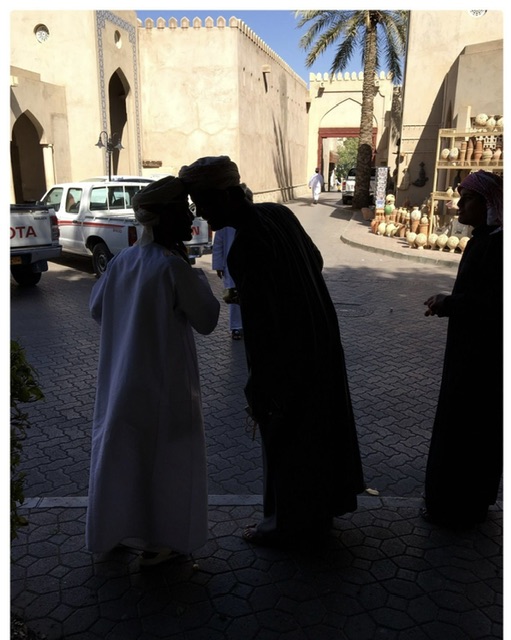

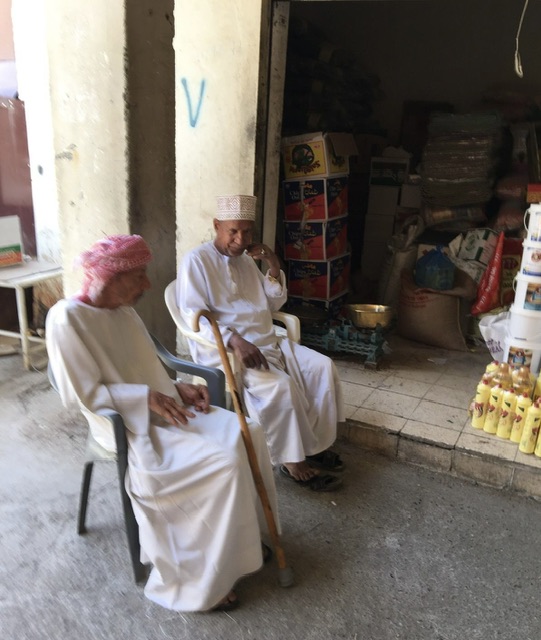
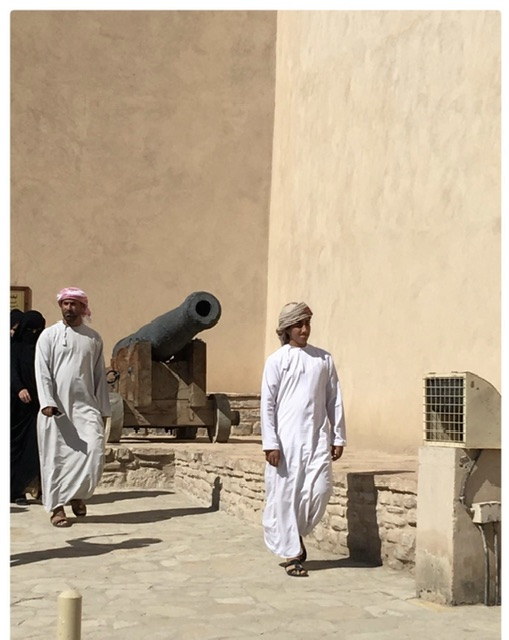
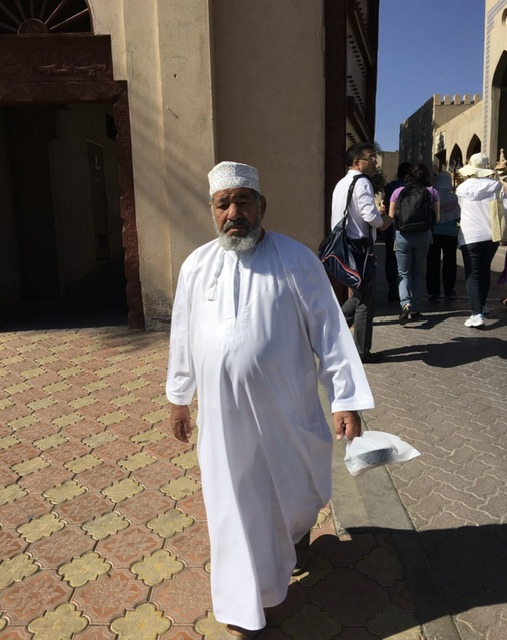
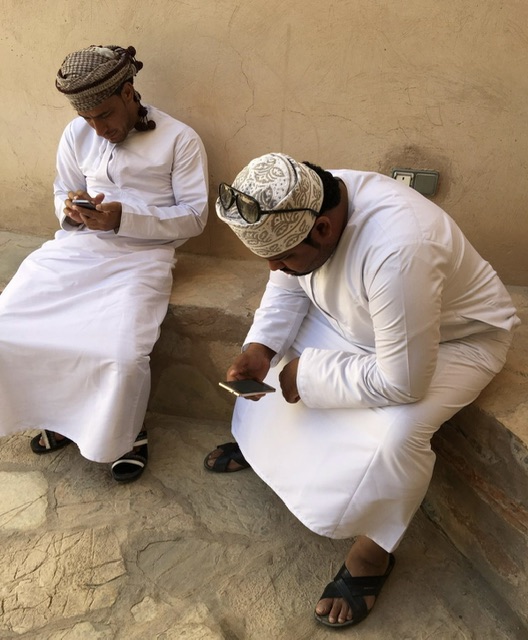
The above is a morning tour!
It was almost noon, close to 12 o'clock, after we left Nizwa Castle, and I thought we would go for lunch. However, our local guide, Xiao Zhao, took us to continue driving to see another famous Omani attraction: Falaj.
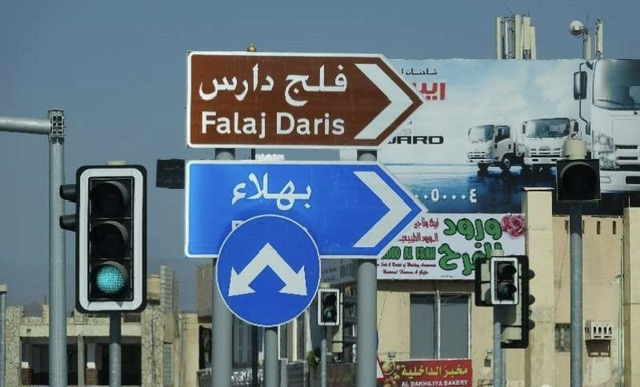
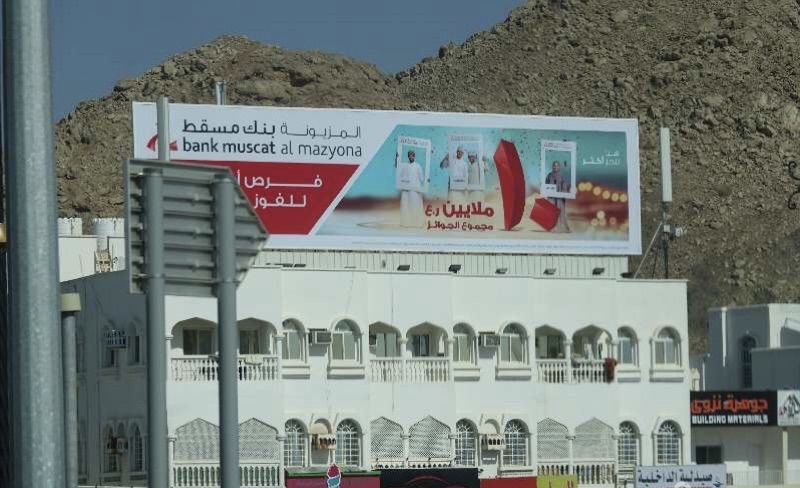
Falaj is an irrigation system invented by the Omanis. It can be seen everywhere in Oman and is still in use today. Due to its long history, unique structure, and outstanding practical function, it was listed as a UNESCO World Heritage Site in 2006.
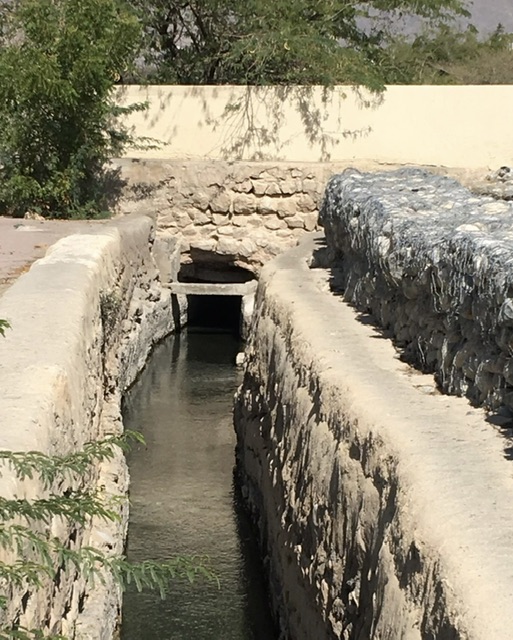
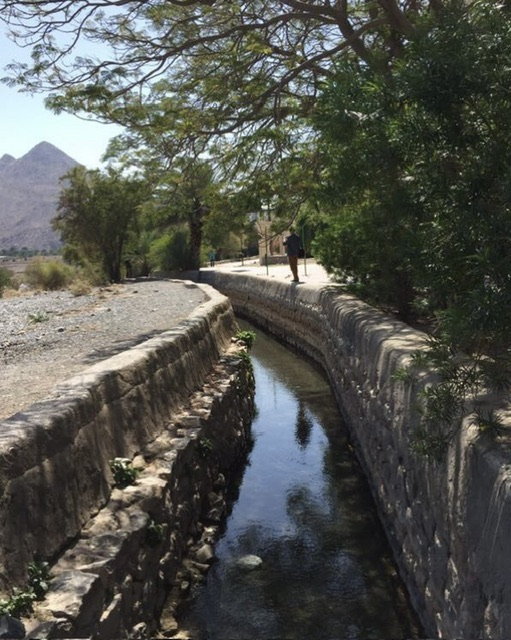
Falaj is a unique agricultural irrigation method that can deliver water to almost every corner of the country without using machinery. In ancient times, when Falaj was widely used in Oman, surrounding countries could only rely on rainwater for survival. This advanced hydraulic technology has played an important role in irrigating Omani farmland and providing water for residents for thousands of years. Today, although a large number of agricultural machines have been introduced, Falaj is still widely used in rural areas. It not only provides valuable water sources for Omanis but also shapes the unique layout of Omani villages and influences people's lifestyles. According to the Omani Ministry of Agriculture and Water Resources, there are more than 4,500 Falaj systems across the country, of which 1,095 have dried up due to aging and low groundwater levels, while more than 3,000 are still effectively usable. The Falaj in Oman is as dense as a spider web, with an average length of 3 to 5 kilometers per system, totaling over ten thousand kilometers, delivering 900 million cubic meters of water annually, accounting for 70% of the national water consumption. Additionally, 55% of the irrigation water for farms also comes from Falaj.
Historians have verified that Falaj has a history of over 2,500 years, with the earliest records dating back to the Assyrian Empire around 700 BC.
We are visiting a park in the suburbs of Nizwa. This section of Falaj is 7,990 meters long and can still irrigate nearby farmland.
After finishing here, we headed to a local restaurant for lunch.
This is an Indian restaurant, and I was curious why there is an Indian restaurant deep in the small town of Amman. It is probably similar to how we have Lanzhou noodles and Xinjiang cuisine everywhere in our country. Oman belongs to West Asia.
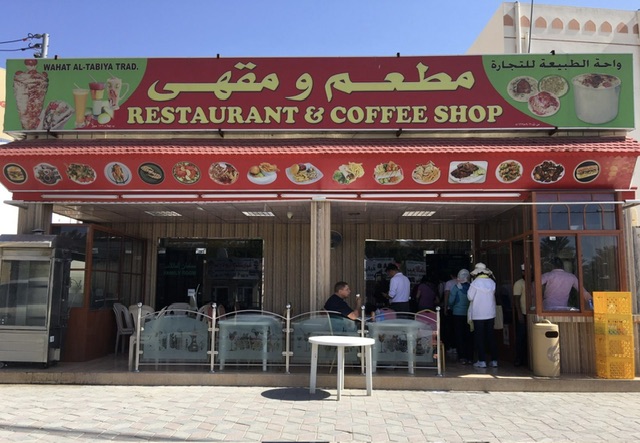
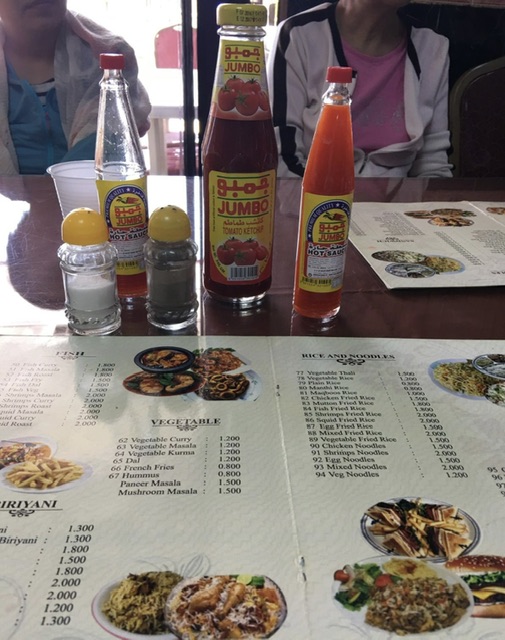
Not far from the restaurant is an ancient castle, which you could easily miss if you are not careful. The entrance is not crowded, nor is it as lively as the entrance to Nizwa Castle. If it weren't for the guidance of our tour guide Xiao Zhao, we wouldn't have known it was the famous Bahla Fort ruins, a UNESCO World Heritage Site.
After a short rest following lunch, we entered Bahla Fort for a visit.
The sign and the "World Heritage" logo.
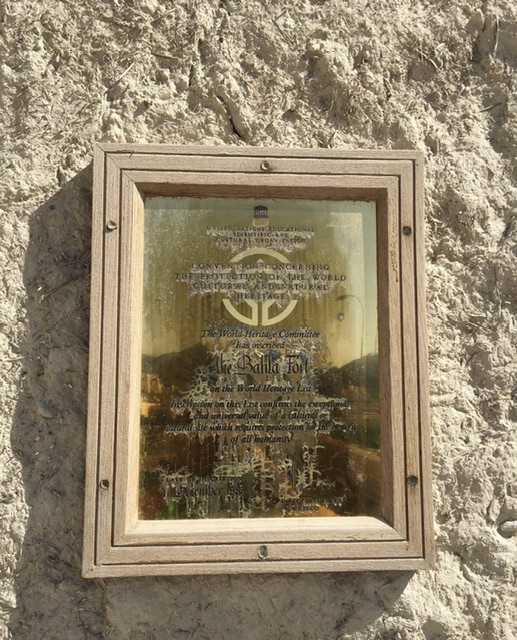
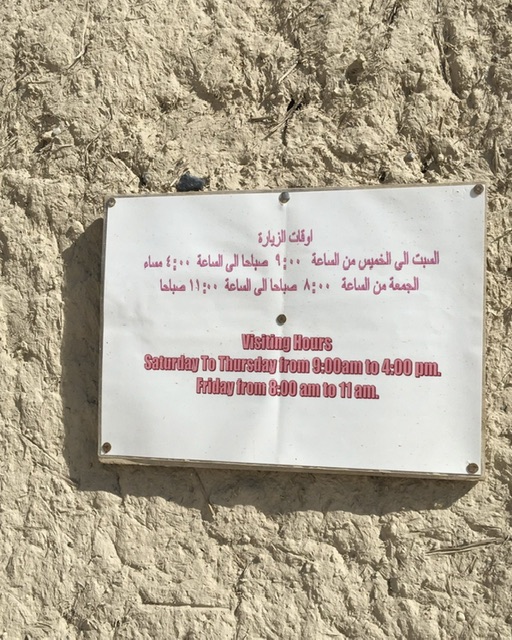
Seeing this, I felt deeply.
They are relatively low-key, unlike some major scenic spots in our country, where being included in the "World Heritage" list is a big deal, with so many signs erected and so much money spent.
Entering the main gate, there is an oil painting exhibition in the corridor.
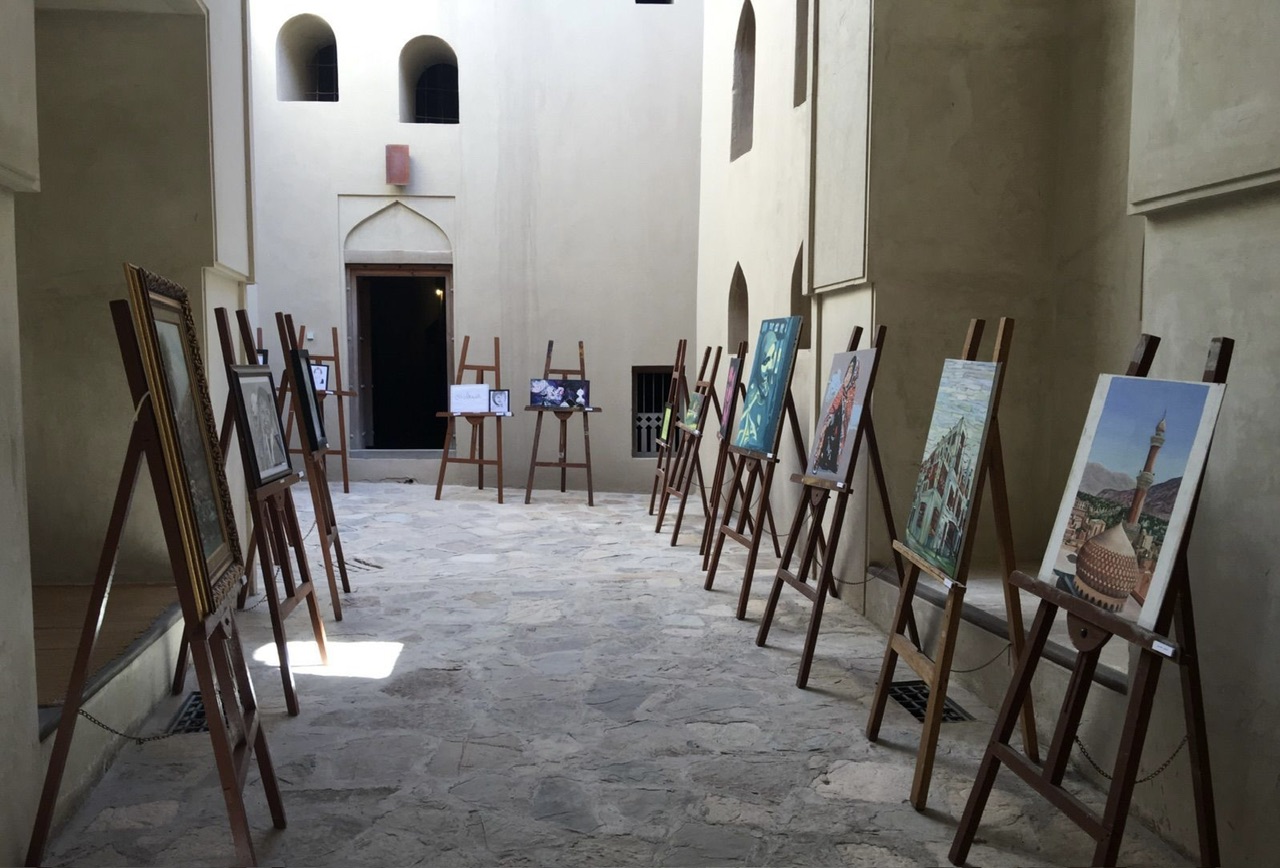
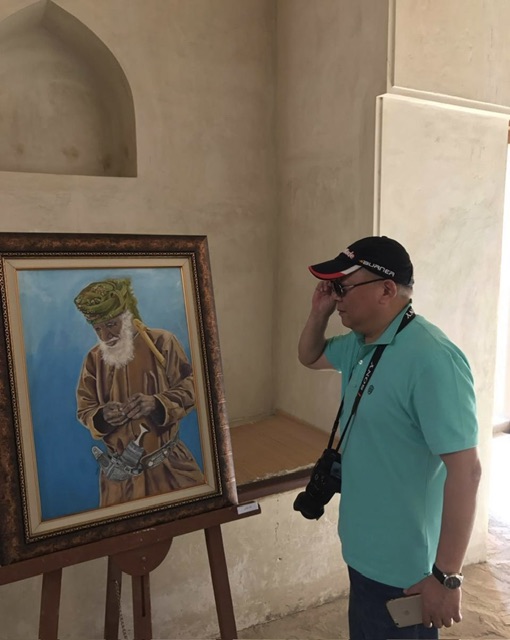
The Bahla Fort ruins are located not far from the capital of Oman, in the Bahla Oasis, surrounded by walls, with a foundation of mud bricks and stones. It was listed as a cultural heritage site in the World Heritage List in 1987.
Due to the degradation of the soil at Bahla Fort and the Bahla Oasis, it was included in the World Heritage in Danger list at the 12th session of the World Heritage Committee on December 9, 1988.
UNESCO recognizes Bahla Fort as the beginning of Omani civilization.
Bahla Fort was built in the 13th to 14th centuries and is one of the four most famous historical castles in Oman, located more than 40 kilometers from Nizwa.
Built according to the terrain of the mountains.
Standing high on the castle walls, I looked out and saw the walls extending to the distant mountains.
Under the scorching midday sun, I was very excited, holding my new Sony camera, climbing up and down, seriously observing this castle built in the 13th to 14th centuries.
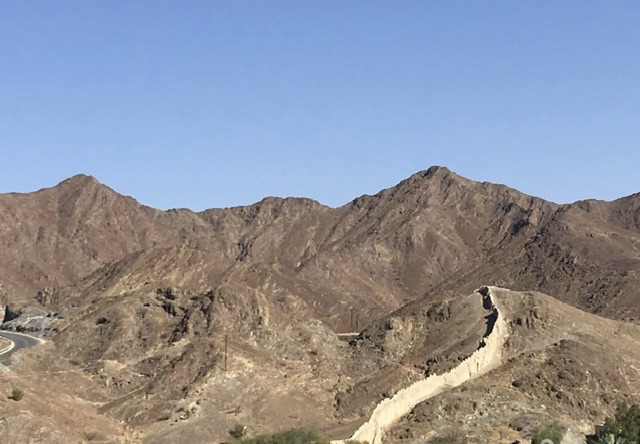
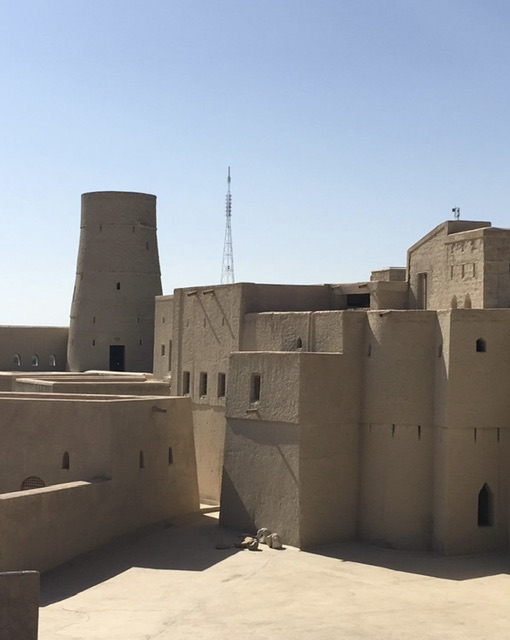
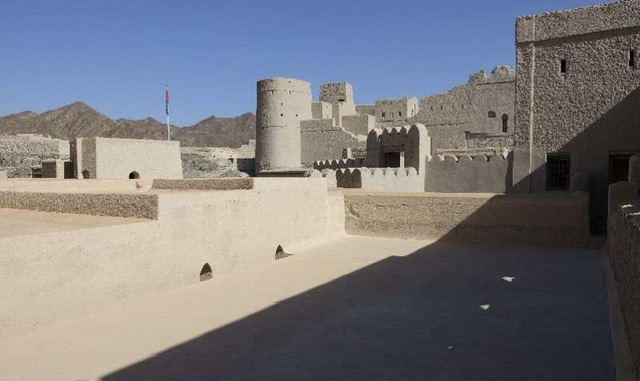
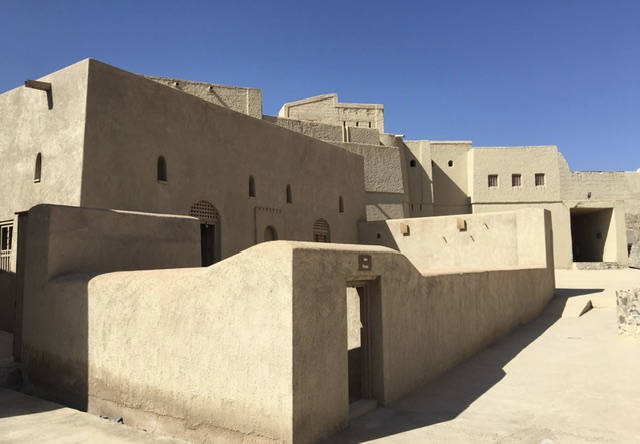
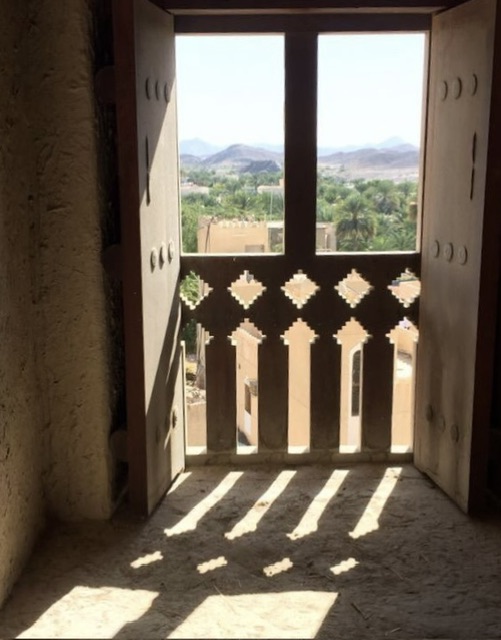
In one day, I visited two ancient castle ruins in Oman, feeling a lot.
A small Oman does such a good job of protecting historical sites, while our vast country, the history of the Chinese nation, is shamefully lacking in protection of historical relics. It is indeed not a small matter to protect and promote historical culture for our ancestors and future generations.
There was one last program left for the day, as two cars headed deep into the mountains.
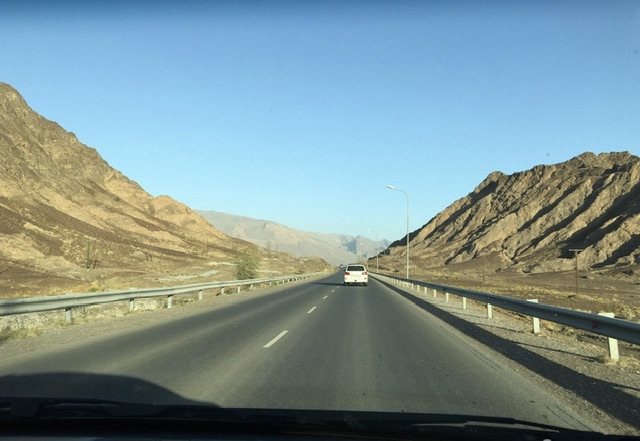
After driving a long way through the towering mountains, since our guide Xiao Zhao was leading the way in the front car, we in the back car could not hear the explanation and just stared blankly at the mountains outside the window, not knowing where we were heading.
After getting off the highway, we were on mountain roads, and later I realized the meaning of a Chinese proverb: "After the mountains and rivers, there seems to be no road, but there is another village with willows and flowers."
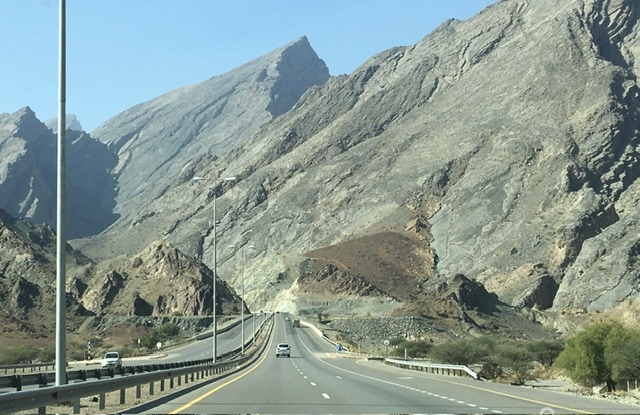
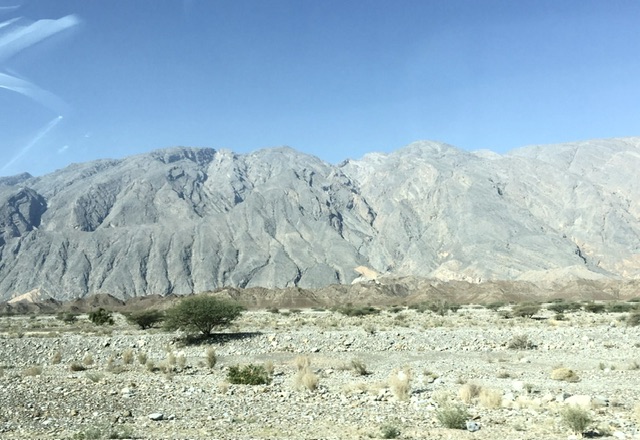
Finally, I vaguely saw a few houses on the mountainside in the distance, but they were all relatively new houses. What was there to see? I wondered.
Misfat. Our final destination!
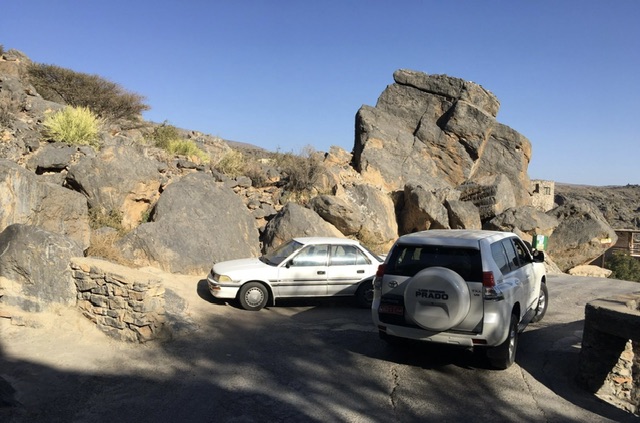
(To be continued)
